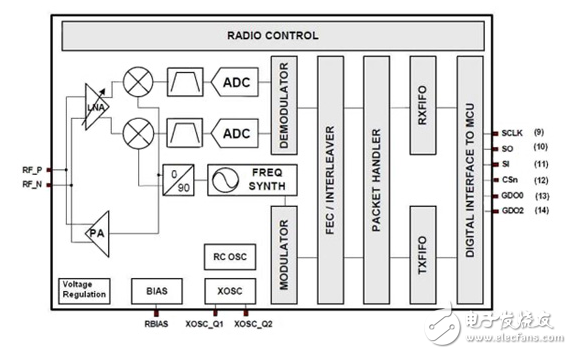
资料下载

1 GHz无线智能电表接口的设计
1 GHz无线智能电表接口的设计
智能电表是创建智能家居的核心。能够衡量家庭的总体电力使用情况并将数据反馈给公用事业是管理公用电网负荷并最终减少用户账单的关键因素。
增加无线连接到电表是相对简单的最新的射频模块。这些提供了所有在特定地理区域认证的rf连接。然而,这些模块需要连接到仪表上直接获取数据,或者连接到电流消耗的传感器。这可以用低成本的8位微控制器相对容易地完成。
使用不受管制的子1 GHz频段具有智能仪表设计的许多优点。较低的频率进行较低的数据传输速率更长的距离,给系统设计者显著的优势。智能电表只需要每天发送少量数据,因此数据速率很低。这允许使用更长的距离,与诸如ZigBee这样的协议在2.4 GHz时可以携带更多数据是非常不同的。使用子1 GHz频带也避免了来自2.4 GHz源的潜在干扰,例如Wi-Fi、蓝牙和微波炉,这进一步降低了建立可靠无线链路所需的功率。

The latest RF chips from Texas Instruments have been demonstrated to carry low rates of data (a few kbyte/s) over distances of up to 10 km at these lower frequencies. This has two advantages: more devices can be connected to a single hub or concentrator, or the power consumption of the RF transceiver can be reduced dramatically. This allows the system architect to optimize the balance of power consumption and reach. For example, several streets of houses could be connected via a sub-1 GHz link to a concentrator in the street, avoiding the need for broadband hubs in every home.
Modules support different wireless network topologies such as point-to-point, point-to-multipoint, peer-to-peer, and mesh networks depending on the system architecture. Mesh networks allow neighboring units to link together and carry data, greatly extending the reach. This hits the data rate, but for a smart meter network, the reach is far more important to saving costs than the data rate and there is plenty of headroom to support mesh networking.
声明:本文内容及配图由入驻作者撰写或者入驻合作网站授权转载。文章观点仅代表作者本人,不代表电子发烧友网立场。文章及其配图仅供工程师学习之用,如有内容侵权或者其他违规问题,请联系本站处理。 举报投诉
- 相关下载
- 相关文章





